The Lost Peace?
Russian-Ukrainian peace talks, February–March 2022.
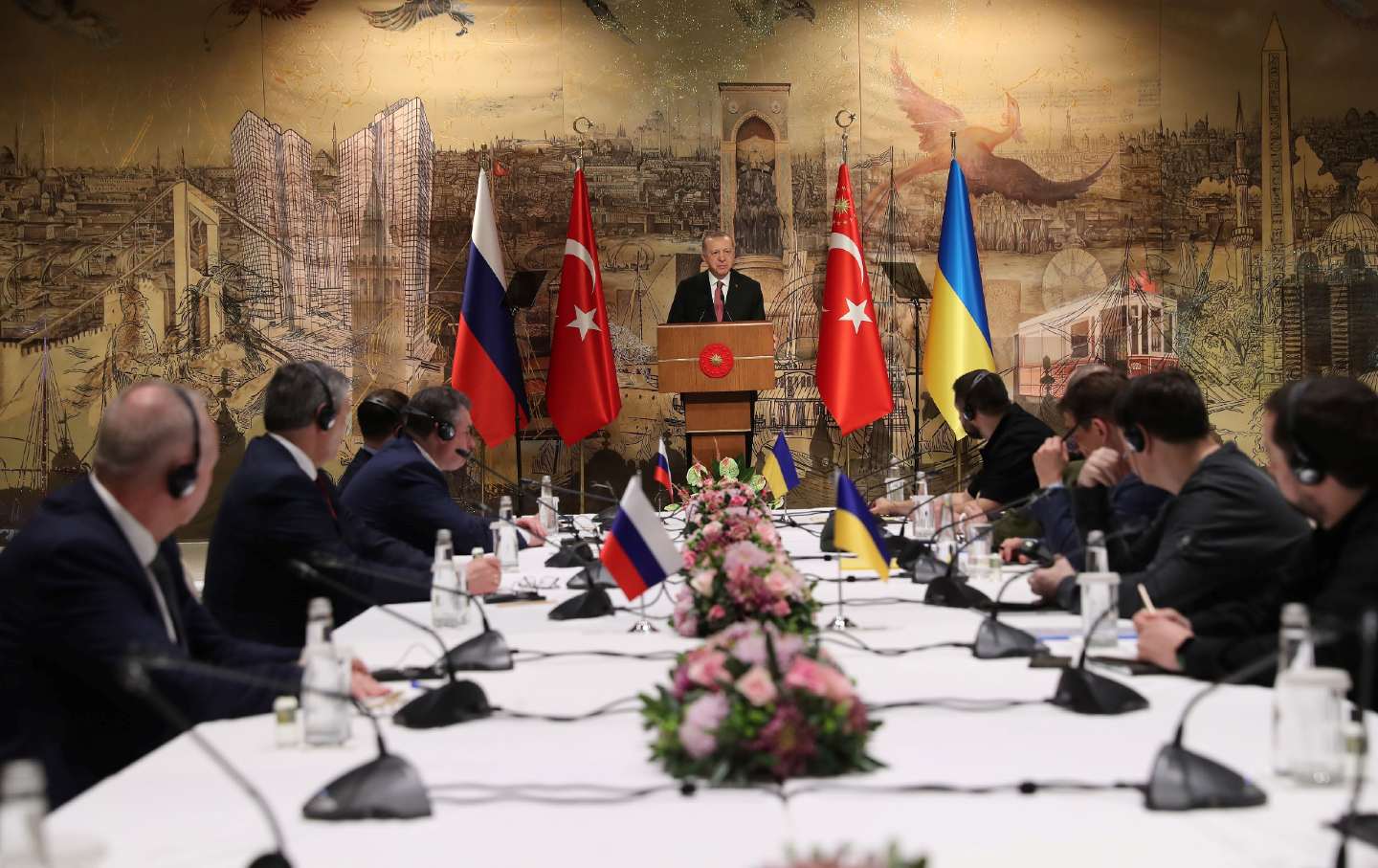
As the Ukrainian war approaches its second anniversary, there has been renewed, if rather limp, talk of a cease-fire followed by negotiations. The premise is that since neither side can “win,” it makes sense to start making peace. Few now remember that the war almost ended before it got going. On February 24, 2022, Russia launched ground and air attacks on Ukraine on four fronts. On February 28, 2022, Russian and Ukrainian officials came together in Gomel, Belarus, to start to negotiate peace. Peace talks continued intermittently for a month before being called off.
Knowledge of these talks has been steadily leaking ever since President Putin waved a “peace agreement” before Russian TV cameras on June 17, 2023, which he said Ukraine had “trashed.” It was, said Putin, a “treaty on permanent neutrality and security guarantees of Ukraine,” with 18 articles and an appendix dealing with “armed forces and other things.”
Last month, Kremlin spokesman Dmitri Peskov said that “Britain had sunk chances of a peace deal in 2022 by putting pressure on Kyiv to refuse a draft deal” shortly after Russia sent troops into Ukraine.
What actually happened in February–March 2022? And what does it tell us about the prospect of peace today?
The Negotiations
According to a New York Times analysis of the 2022 negotiations later that year, Ukraine demanded that Russia be held accountable for war atrocities, withdraw from all captured Ukraine territory, including Crimea, and pay reparations. Russia demanded Ukrainian recognition of its annexation of Crimea in 2014, permanent Ukrainian neutrality, and autonomy for the ethnic Russian provinces, or oblasts, in eastern and southeastern Ukraine. No progress was made, but both sides agreed to continue talking, this time with representatives of their foreign and defense ministries, and presidential administrations.
After a short postponement, talks restarted in the Brest region of Belarus on March 3. The discussions concentrated on establishing “humanitarian corridors” for Ukrainian refugees.
Further talks on March 7 reverted to Russian and Ukrainian requirements for an end to the fighting. Reuters reported Kremlin spokesman Peskov saying that Russia would stop its operations “in a moment” if Ukraine enshrined neutrality in its Constitution, and accepted the loss of Crimea and the breakaway regions of Donbas. The Ukrainians stood by their previous demand for a complete Russian withdrawal from all occupied territories, including Crimea, plus reparations. Despite complications over humanitarian corridors, the first three rounds showed some progress. Kyiv said it was willing to consider a key Moscow demand, guaranteed neutrality.
The Ukrainians had never liked that the negotiations were held in Belarus. Turkish Prime Minister Recep Erdogan was eager to broker a peace deal, so on March 10 there was a switch of venue to the seaside resort of Antalya in Turkey, with the Antalya Diplomacy Forum providing an opportunity for the Russian and Ukrainian foreign ministers—Sergey Lavrov and Dmytro Kuleba, respectively—to meet for the first time since the war started. They discussed temporary cease-fire agreements in heavily embattled regions, especially Mariopul, to allow for humanitarian corridors.
A one-and-a-half-hour meeting chaired by Turkish Foreign Minister Mevlut Cavusoglu failed to produce any breakthrough even on this limited issue. According to the Ukrainian foreign minister, “unfortunately, Minister Lavrov was not in a position to commit himself to anything” without reference back to Putin. The official website of the Russian Ministry of Justice told a different story: that the Ukrainian side was trying to “replace or devalue the existing negotiations track, which is taking place in Belarus.” Nevertheless, the Turkish foreign minister thought it was an important start, as the foreign ministers of both sides were present.
Between March 13 and 17, a fifth round of peace talks took place via video conference. This produced the best outcome so far. On March 15, President Zelensky reported “real progress”; the next day, Lavrov spoke of “some hope for reaching a “compromise.” The Financial Times of March 16 signaled a 15-point draft deal by which Kyiv gave up its NATO ambitions in return for security guarantees outside NATO. In an interview with ABC News, Ukrainian negotiator Podolyak said Russia’s demands and position have “softened significantly” and, “therefore, we have much confidence that we will have a cease-fire in the coming days.” He attributed the softening to the failure of the Russian “blitzkrieg” to capture any big cities, leaving it with “no chances whatsoever to move further into Ukraine territory.”
By this time, a certain amount of peace momentum had replaced war momentum. There was no breakthrough at the sixth round of of negotiations on March 21. However, according to BBC News’ Russian service and the Russian newspaper Vedomosti, President Zelensky requested a face-to-face meeting with Vladimir Putin. Lavrov rejected this, being reported by Reuters a couple of days later as saying, “It should happen once the two sides are closer to agreeing on key issues.” This rebuff brought a temporary halt to the sequence of negotiations. It also coincided with the start of a Ukrainian counteroffensive on March 22, which by April 3 had ended the Russian threat to Kyiv.
The seventh round of talks on March 29 saw the renewal of face-to-face negotiations in Istanbul. The discussion centred on a draft treaty, the gist of which was permanent Ukrainian neutrality and non-nuclear status, in return for which Ukraine would have security guarantees similar to Article 5 of the NATO military alliance from China, Russia, UK, France, Belarus and others. Ukraine would also start a 15 year consultation period on the status of Crimea, though reserving the right to reconquer Luhansk and Donetsk. For its part, Russia would “ drastically reduce” military activity near Kyiv to “create the necessary conditions for further negotiations.” Ukraine’s successful counteroffensive had started a week before the Istanbul peace talks. The Russian offer to “withdraw” on March 29 was thus far from voluntary.
This draft was the one Putin waved on television on June 17, 2023. He called it a “not bad result.”
Popular
“swipe left below to view more authors”Swipe →The talks of March 29 ended in the expectation that the draft agreement would be initialed bythe principals, laying the foundations for a compromise peace. Putin even suggested meeting Zelensky. This never happened, and that was the end of the bilateral talks. Russian Foreign Minister Sergey Lavrov stated that “Washington, London and Brussels want to use Ukraine to their advantage” and “no peace deal can be made.” Zelensky stated that Ukraine would not agree to peace until Russia agreed to return Crimea and Donbas region to Ukraine.
To sum up: in the early weeks that followed the Russian invasion of Ukraine, Russia and Ukraine engaged in substantial attempts to negotiate a peaceful settlement. These could have ended the war before the devastation of Ukraine’s infrastructure, the massive loss of lives, and the increased risk of unchecked escalation. They featured an offer by Ukraine not to join NATO in return for equivalent security guarantees. Crucial points of disagreement about Crimea and Donbas, as well as about the practicability of the no-NATO guarantees, remained. But on March 29, both sides apparently expected to go on talking.
Reasons for Failure
Was there a real chance for peace in March 2022? If so, why was it lost? Let’s take each question in turn.
The two sides were never as close to each other as the formula they concocted suggested. Yes, Ukraine was willing to renounce joining NATO, but knew that equivalent security guarantees by the great powers would be hard to come by. Nor was there any real prospect of Russia “negotiating away” its annexation of Crimea in 2014. And as far as known, no progress had been made in settling the future of the Donbas (the Russian-speaking provinces of eastern and south-eastern Ukraine). Agreements between Russia and Ukraine, brokered by France and Germany, known as Minsk I and Minsk II, intended to give the provinces a degree of autonomy within Ukraine, had collapsed in 2015. Now, they were partly occupied by Russian troops.
Important in determining the immediate outcome were the fortunes of war. It was their initial failure to capture Kyiv that got the Russians talking, their continuing offensive in March that brought Ukraine to the table. With the success of the Ukrainian counteroffensive of March 22 the Russians had a renewed incentive to negotiate, while Ukraine was starting to scent victory. The Ukrainian counter-attack also crucially strengthened the Western resolve to support Ukraine, leading to the withdrawal by Ukraine of even cosmetic concessions. As the Ukrainian army continued to inflict defeats on the Russians, and Western military aid was ramped up in the summer 2022, Ukraine had little further reason to talk to the Russians. The damage inflicted by continued fighting would be paid back by victory.
These were the structural obstacles to successful peace negotiations. However, there were also two dramatic events that tilted the balance against peace.
As Russian forces were driven out of the Kyiv region at the end of March, Ukrainians claimed to have discovered evidence of atrocities—rapes, murders, massacres, looting, indiscriminate bombings and other war crimes—in Bucha, Irpin, Borodianka, Azovstal. These atrocious events, Russian responsibility for which has been confirmed by the Office of the UN High Commissioner on Human Rights (December 2022) gave Ukraine an additional reason to break off negotiations—a move strongly supported by the West.
An even bigger obstacle to further talks may have been the arrival in Kyiv on April 6 of British Prime Minister Boris Johnson. According to Davyd Arakhhamia, Ukraine’s chief negotiator at Istanbul, “Johnson brought two simple messages to Kyiv. The first is that Putin is a war criminal; he should be pressured, not negotiated with. And the second is that even if Ukraine is ready to sign some agreements on guarantees with Putin, they [the NATO powers] are not.” Three days after Johnson returned home Putin announced publicly that talks with Ukraine “had reached a dead end.” For his part, Johnson promised Zelensky $130 million of military equipment and $500 million kin financial aid, while President Biden announced a $800 million military package to Ukraine.
Johnson’s intervention has been discounted on the grounds that he was in no position to tell the Ukrainian government what to do. This is legally correct, but vacuous. He was in a position to tell them under what conditions Britain (and the USA) would supply further military and economic aid. Had Johnson’s promise of support been conditional rather than unconditional, it is inconceivable that negotiations would not have continued. (On US and British sabotage of tentative Ukrainian-Russian peace talks, see David von Drehle in The Washington Post and Ted Snider in The American Conservative.)
What of the Future?
With the military situation in Ukraine now stalemated, there is renewed pressure for peace talks. There have been reports of “secret talks” between US and Russian officials. There have been public peace initiatives by China, the Vatican, Brazil, Mexico and others. Thought leaders like Anatol Lieven and Jeffrey Sachs have strongly argued the case for an immediate cease-fire. These initiatives seem to be based on a sense that the war is going nowhere, but that were it to go somewhere, it could easily escalate into a nuclear confrontation.
When Russian Foreign Minister Sergei Lavrov said that the Ukraine conflict “is not as much about Ukraine as about the legal world order,” he correctly pinpointed the main obstacle to the restoration of peace: the lack of agreement between the great powers on a legitimate world order. Specifically, there was no discussion about how to slot the Russia-Ukraine relationship into the post-Soviet security space. Russia’s claim that it had a right and indeed a duty to intervene in Ukraine to protect its integrity and security runs up against the doctrine that legally established frontiers must not be changed by force. However, existing frontiers, often the result of inventive colonial-era map-making, may not accord with current realities. How then to change frontiers peacefully if sentiment or security demand it? Clearly, Russia’s idea of Ukraine as an integral part of itself was incompatible with Ukrainian nationalism. At the same time Ukraine’s claim, backed by the West, to total sovereignty in foreign policy, is incompatible with Russia’s historical conception of its security needs. The disparity between these two mental fabrics is the biggest structural obstacle to peace.
Since the breakdown of the peace talks in April 2022, the military situation has scarcely changed: Russia is no nearer defeating a Ukraine supplied by NATO, and Ukraine is no nearer defeating its stronger neighbor. Time is on the side of Russia with its far greater resources of manpower, artillery, and airpower. In these circumstances, there will be a strong temptation on the Ukrainian/NATO side to break the stalemate by scaling up the warfare. The danger of escalation should certainly not be discounted. Nor have economic sanctions decisively affected Russia’s ability to continue the war. The military stalemate prevents not just the resumption of “normality” within Ukraine and in Ukraine-Russian relations but stability in the world as a whole, unless we are willing to accept as “normal” the permanent division of the world into two antagonistic military and economic blocs.
Historians will naturally look to history for precedents and lessons. Ukraine has fought for its independence and won, much as Finland did in 1939–40. Admittedly, Finland’s independence came at the price of some territory. If we could think of the current Ukrainian achievement as a successful war of independence, we would be much less fixated on defining Ukrainian victory in terms of the reconquest of every bit of the map called Ukraine in 2014.
The idea of a “security guarantee” for Ukraine outside NATO in the Ukraine-Russian conversations of February–March 2022 was groping toward the concept of a new security architecture to replace the NATO-Warsaw Pact system of the Cold War. Russia was demanding protection against NATO; Ukraine was seeking protection against Russia inside NATO. The compromise is a security structure of which NATO is a major but not the only part. Ukraine’s security should no more hinge on NATO membership than Russia’s on preventing Ukraine’s membership of NATO. Bill Burns, now director of the CIA, wrote in 1995 that there was a need for a security order in Europe “sufficiently in Russia’s interests so that a revived Russia will have no compelling reason to revise it.” Instead, he later wrote, NATO enlargement, had left “a mark on Russia’s relations with the West that would linger for decades.” The European (and indeed the global) security architecture should be one of “variable geometry,” with different structures of security provision available for different parts of the world, but with the whole tending to war prevention. A reformed Security Council of the United Nations should be the foundation (or arch) of any such design.
None of this will come to pass by thought alone. So we must rely on new (and possibly tragic) facts on the ground to provide the impetus to action. But when the facts allow it, thought should be ready to take advantage. That is why one should continuously talk up the need and advantages for peace today, even if its time is not yet.
Disobey authoritarians, support The Nation
Over the past year you’ve read Nation writers like Elie Mystal, Kaveh Akbar, John Nichols, Joan Walsh, Bryce Covert, Dave Zirin, Jeet Heer, Michael T. Klare, Katha Pollitt, Amy Littlefield, Gregg Gonsalves, and Sasha Abramsky take on the Trump family’s corruption, set the record straight about Robert F. Kennedy Jr.’s catastrophic Make America Healthy Again movement, survey the fallout and human cost of the DOGE wrecking ball, anticipate the Supreme Court’s dangerous antidemocratic rulings, and amplify successful tactics of resistance on the streets and in Congress.
We publish these stories because when members of our communities are being abducted, household debt is climbing, and AI data centers are causing water and electricity shortages, we have a duty as journalists to do all we can to inform the public.
In 2026, our aim is to do more than ever before—but we need your support to make that happen.
Through December 31, a generous donor will match all donations up to $75,000. That means that your contribution will be doubled, dollar for dollar. If we hit the full match, we’ll be starting 2026 with $150,000 to invest in the stories that impact real people’s lives—the kinds of stories that billionaire-owned, corporate-backed outlets aren’t covering.
With your support, our team will publish major stories that the president and his allies won’t want you to read. We’ll cover the emerging military-tech industrial complex and matters of war, peace, and surveillance, as well as the affordability crisis, hunger, housing, healthcare, the environment, attacks on reproductive rights, and much more. At the same time, we’ll imagine alternatives to Trumpian rule and uplift efforts to create a better world, here and now.
While your gift has twice the impact, I’m asking you to support The Nation with a donation today. You’ll empower the journalists, editors, and fact-checkers best equipped to hold this authoritarian administration to account.
I hope you won’t miss this moment—donate to The Nation today.
Onward,
Katrina vanden Heuvel
Editor and publisher, The Nation
More from The Nation

The US Is Looking More Like Putin’s Russia Every Day The US Is Looking More Like Putin’s Russia Every Day
We may already be on a superhighway to the sort of class- and race-stratified autocracy that it took Russia so many years to become after the Soviet Union collapsed.
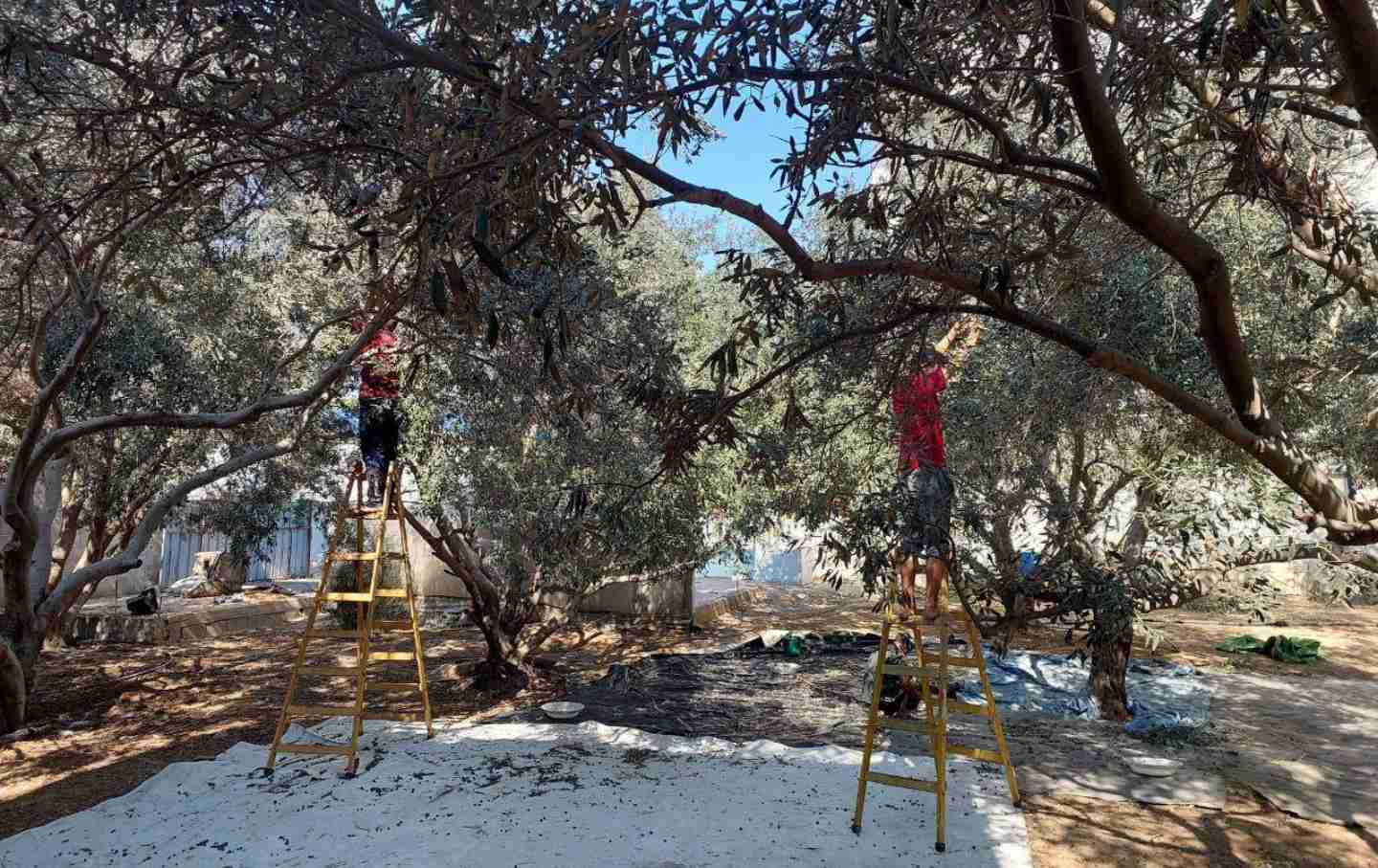
Israel Wants to Destroy My Family's Way of Life. We'll Never Give In. Israel Wants to Destroy My Family's Way of Life. We'll Never Give In.
My family's olive trees have stood in Gaza for decades. Despite genocide, drought, pollution, toxic mines, uprooting, bulldozing, and burning, they're still here—and so are we.
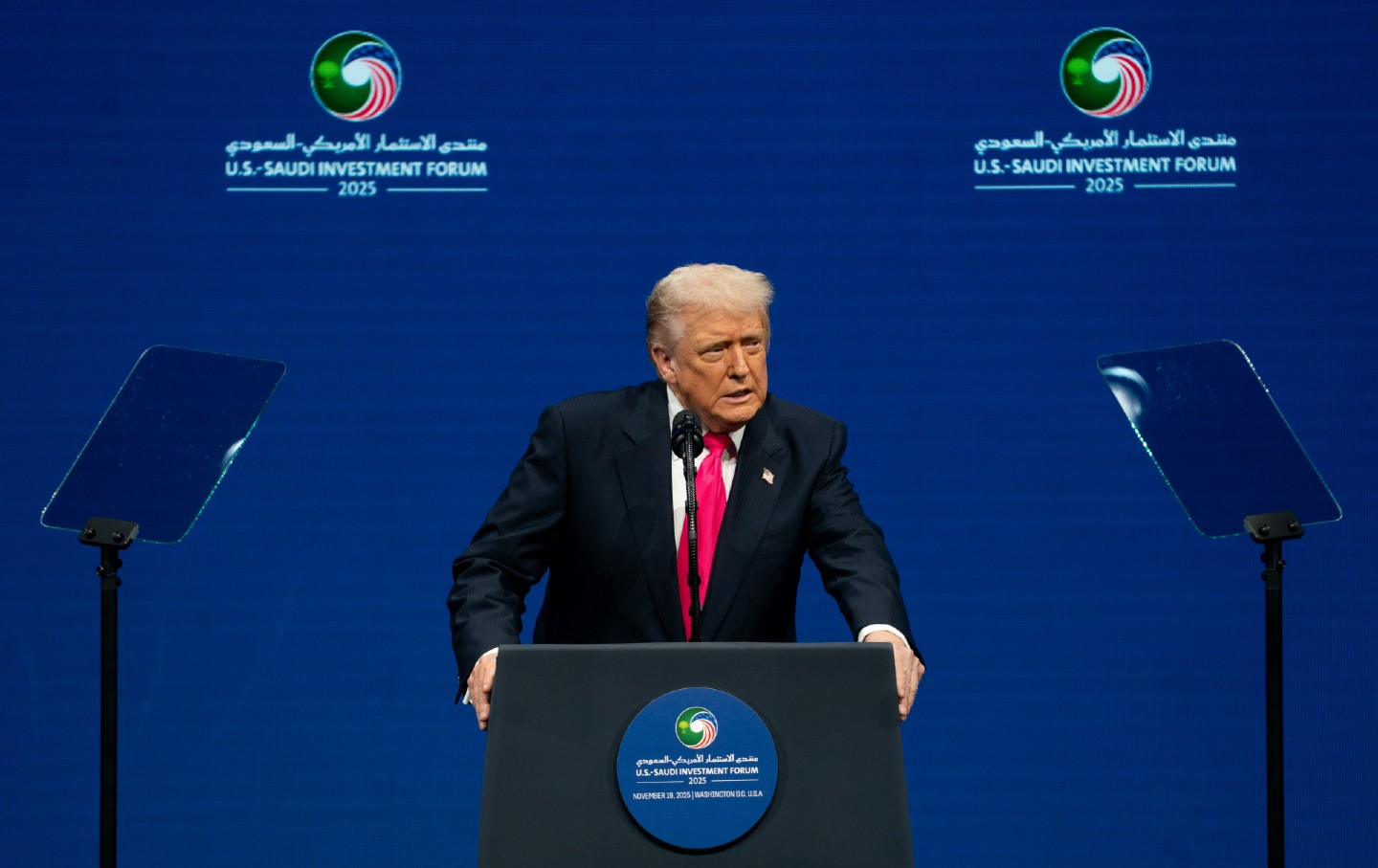
Trump’s National Security Strategy and the Big Con Trump’s National Security Strategy and the Big Con
Sense, nonsense, and lunacy.
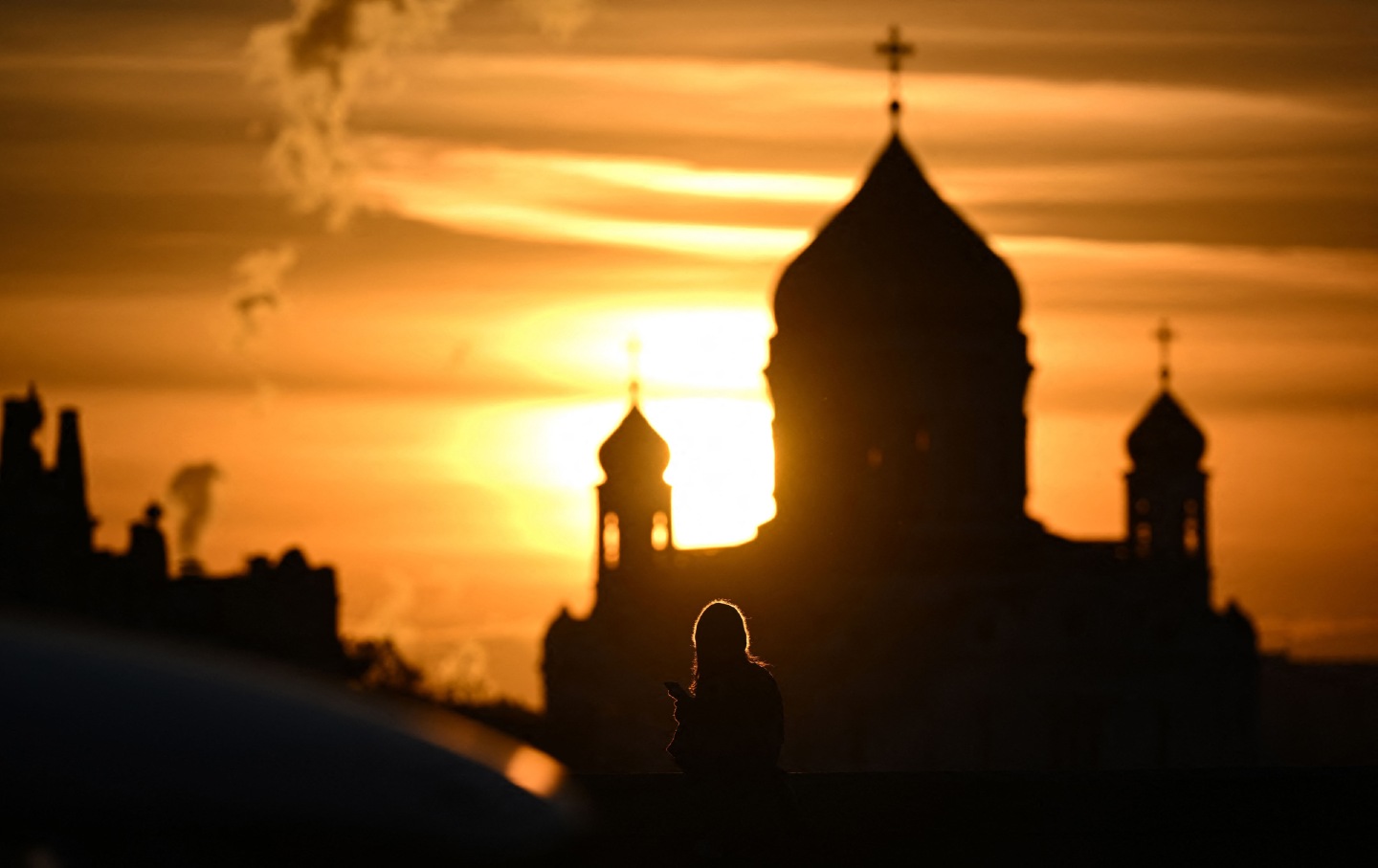
Does Russian Feminism Have a Future? Does Russian Feminism Have a Future?
A Russian feminist reflects on Julia Ioffe’s history of modern Russia.
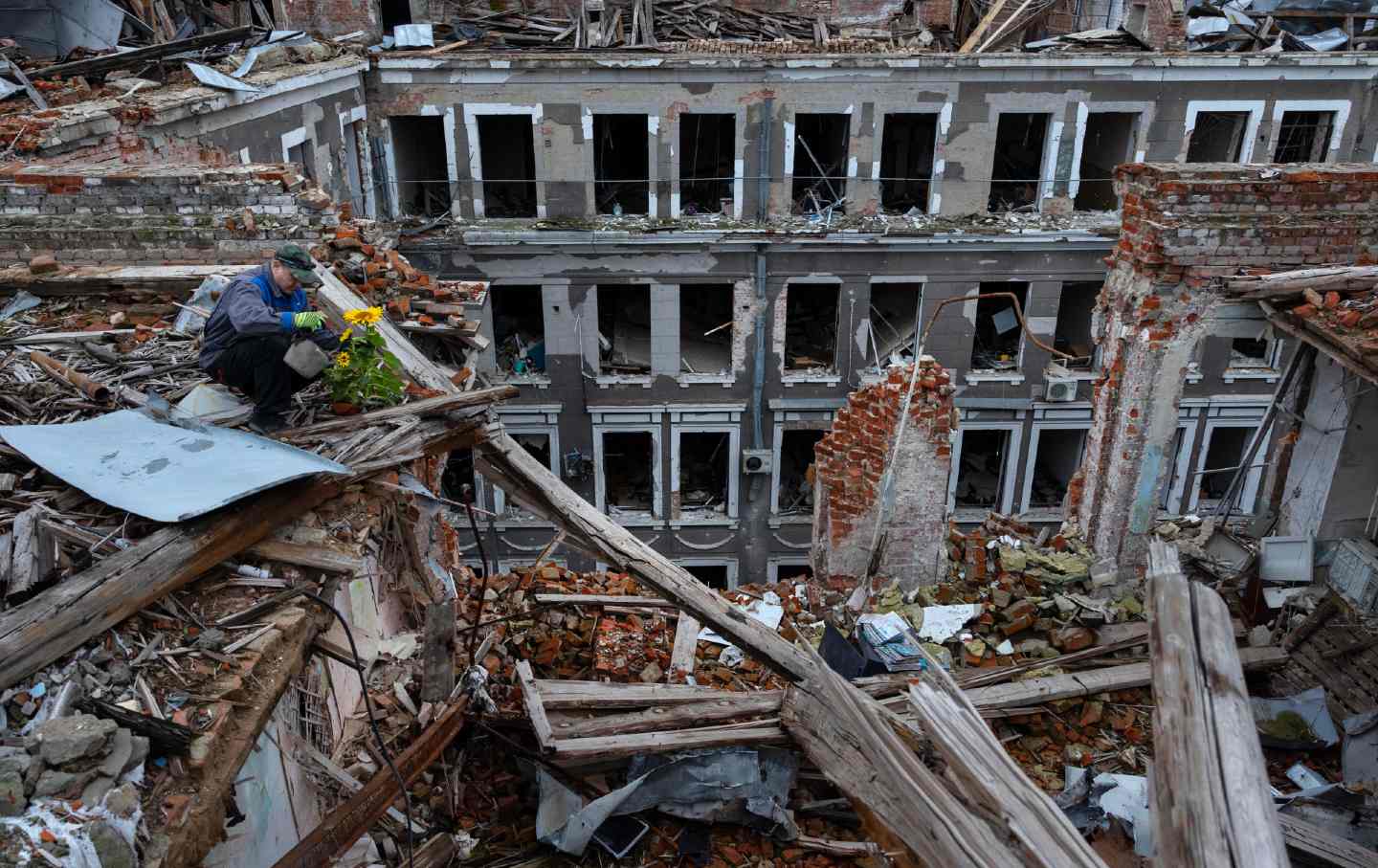
Ukraine’s War on Its Unions Ukraine’s War on Its Unions
Since the start of the war, the Ukrainian government has been cracking down harder on unions and workers’ rights. But slowly, the public mood is shifting.
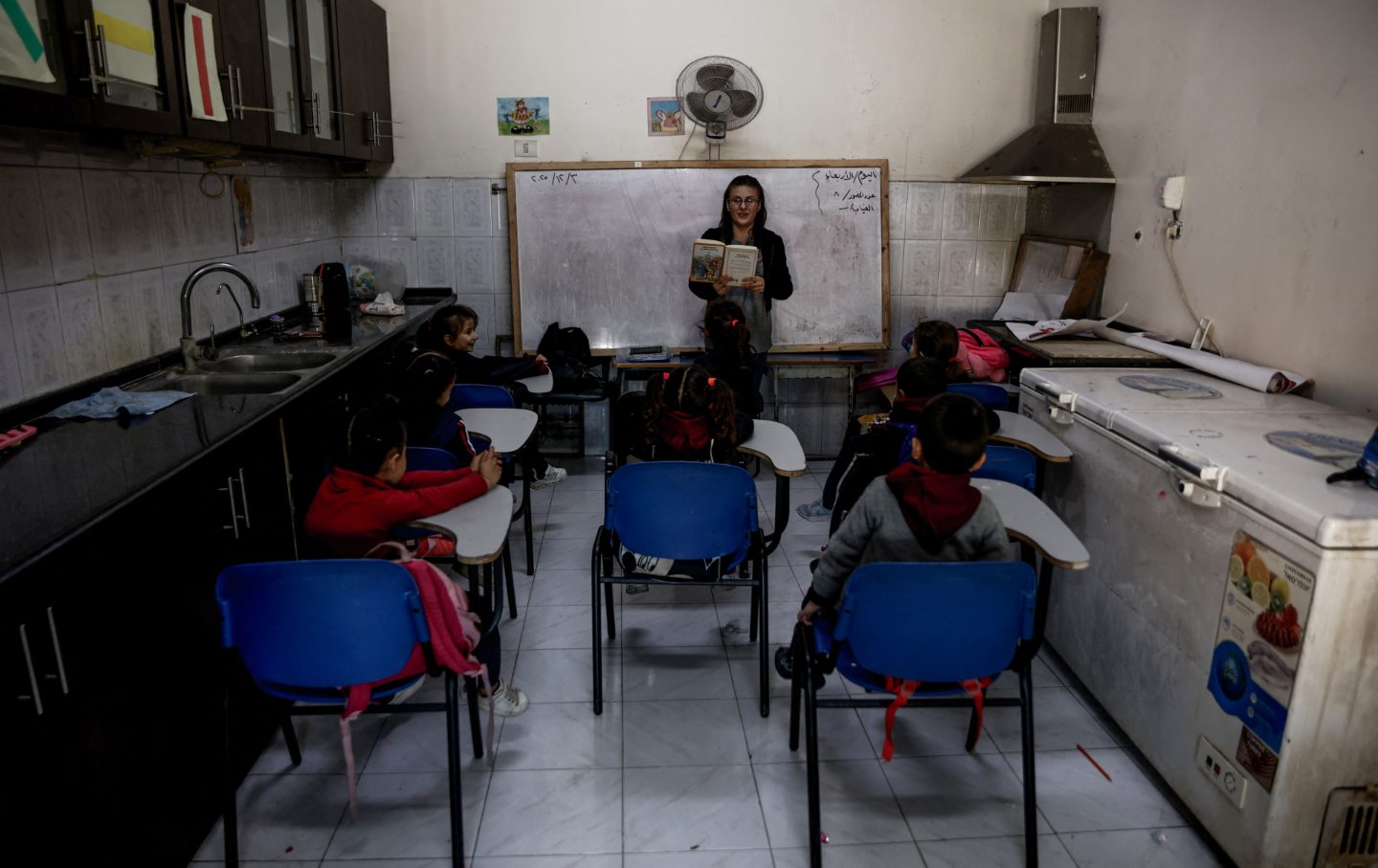
I’m a Teacher in Gaza. My Students Are Barely Hanging On. I’m a Teacher in Gaza. My Students Are Barely Hanging On.
Between grief, trauma, and years spent away from school, the children I teach are facing enormous challenges.


